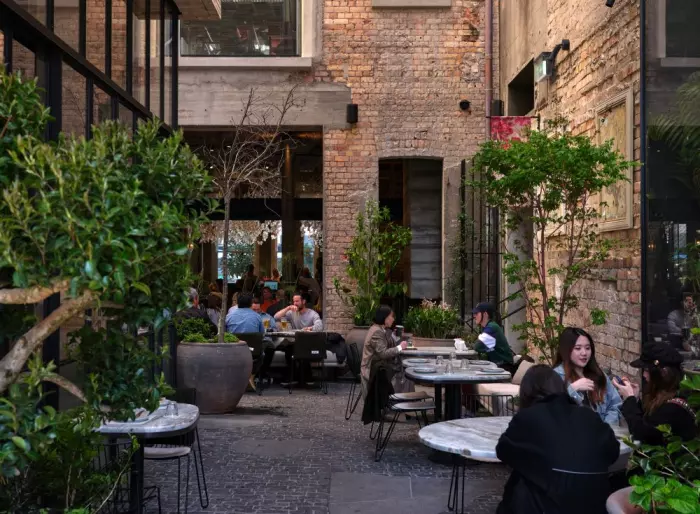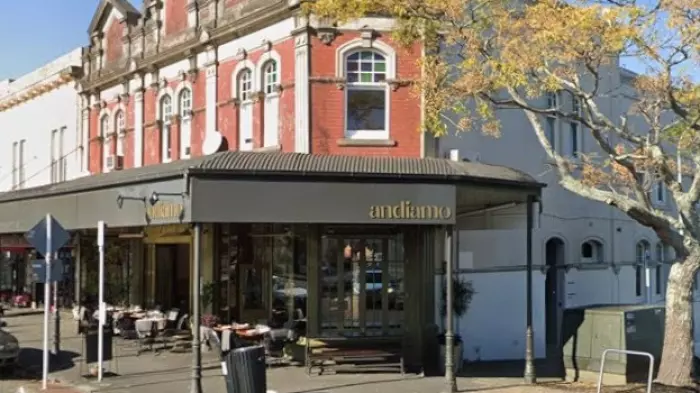At first glance, the Hotel Britomart is indistinguishable from its surroundings in the Britomart precinct. But a closer look inspires curiosity. Designed to complement surrounding historical and contemporary buildings alike, the building achieves this seamlessly by interpreting heritage and modernity in an environmentally friendly way.
It’s the first hotel in New Zealand to be awarded a 5 Green Star Design and Build rating, father-and-son architects Pip and Nat Cheshire having carefully considered every detail to comply with the Green Building Council’s rigorous standards.
The exterior cladding is but one example of this: 150,000 bricks from the warehouses that previously occupied the site have been crushed, reformed and set into concrete panels that lock together on the 10-storey structure – the first time this construction technique has been used in New Zealand.
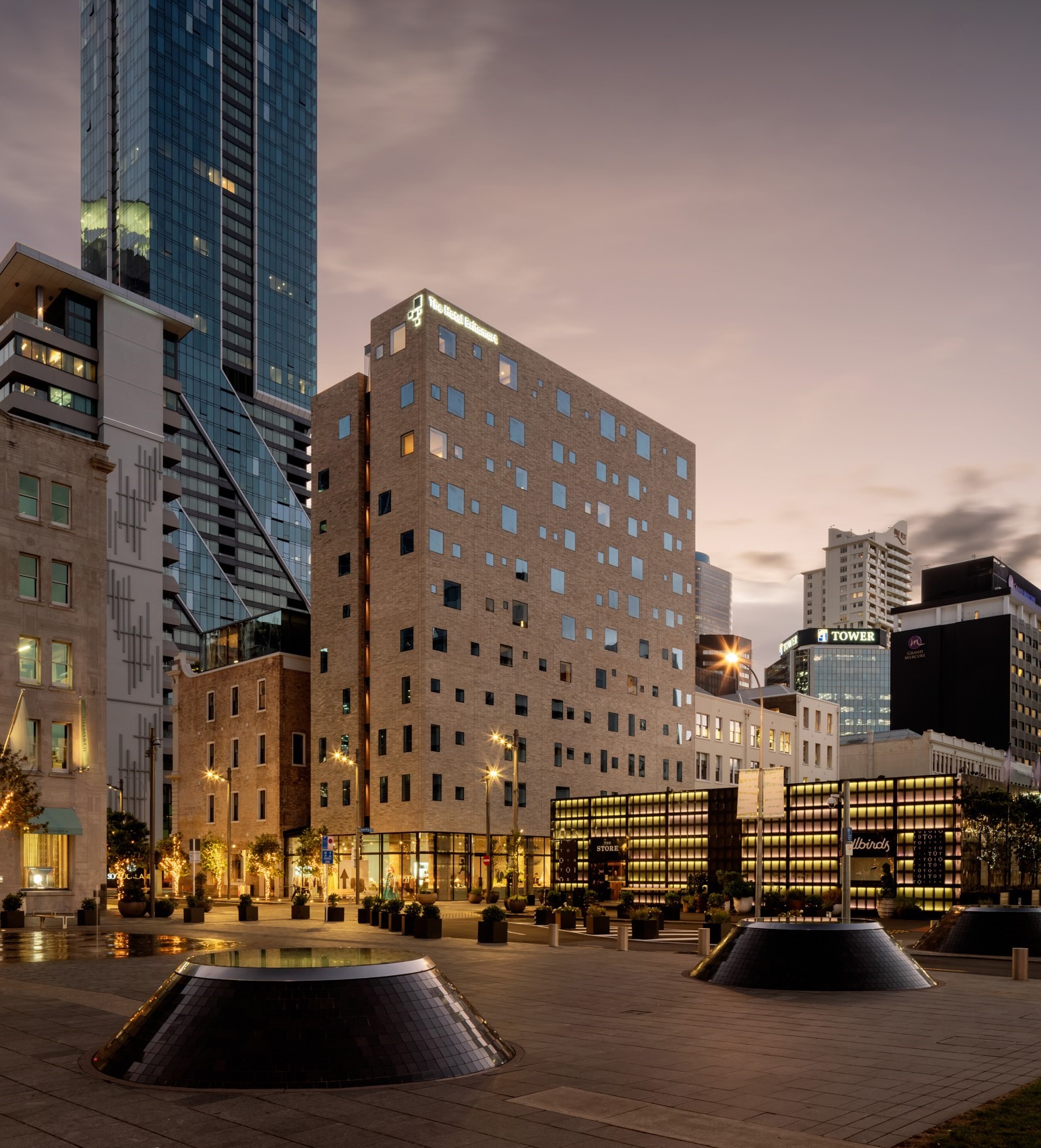 The Hotel Britomart exterior. Photo: Sam Hartnett.
The Hotel Britomart exterior. Photo: Sam Hartnett.
The water used in producing the concrete for the hotel was 50% reclaimed or recycled, and the aggregate was made from 60% recycled materials. Ninety percent of the construction waste was reused or recycled.
The Hotel Britomart celebrates style as much as sustainability. Asymmetric windows break the monotony of surrounding high-rises and are designed to depict the blocks of the Britomart precinct. The hotel entry off Tuawhiti Laneway blends public space into private and welcomes an eager gaze into the lobby, where details are just as bespoke and eco-focused as the exterior.
The lobby is an ensemble of mixed materials that create the essence of what New Zealand looks and feels like in tactile form. A young tōtara tree sits within the centre of the reception console. Shane Cotton’s Long Burning Flame, Look to Whiria sits against a Muriwai black-sand wall, echoing the artist’s five-storey mural on nearby Commerce Street. There’s no Kiwiana kitsch here, just an understated expression of New Zealand style.
Room with a view
BusinessDesk was hosted in a Takutai Square room, overlooking Britomart’s commerce, dining and shopping district, with views of port activity and the North Shore beyond. While the rooms are compact at 22 sq metres, guests certainly don’t go without luxury.
The super-king beds are commercially recyclable, and the pillows are made from recycled plastic fibres – which are so sumptuous that this reviewer bought one the next day. The washable slippers, too, are environmentally responsible, made from shredded recycled clothing and rubber tyres by Nelson textiler Tamzin Hawkins, who also designed the staff uniforms. The sheets and towels are all organic cotton.
The play with texture is repeated throughout the 99 guest rooms, with a mix of horizontal timber panelling in the bedroom and herringbone stone tiling in the bathroom. The rough-walled, dark bathroom is a theatrical contrast to the neat, square bedroom space. Rooms on the northern side of the building are lined with lighter materials to imitate bleaching from the sun, while those on the southern side, indicated by full-length windows that appear outside to section the building in two, feature darker wood and stone to evoke shade.
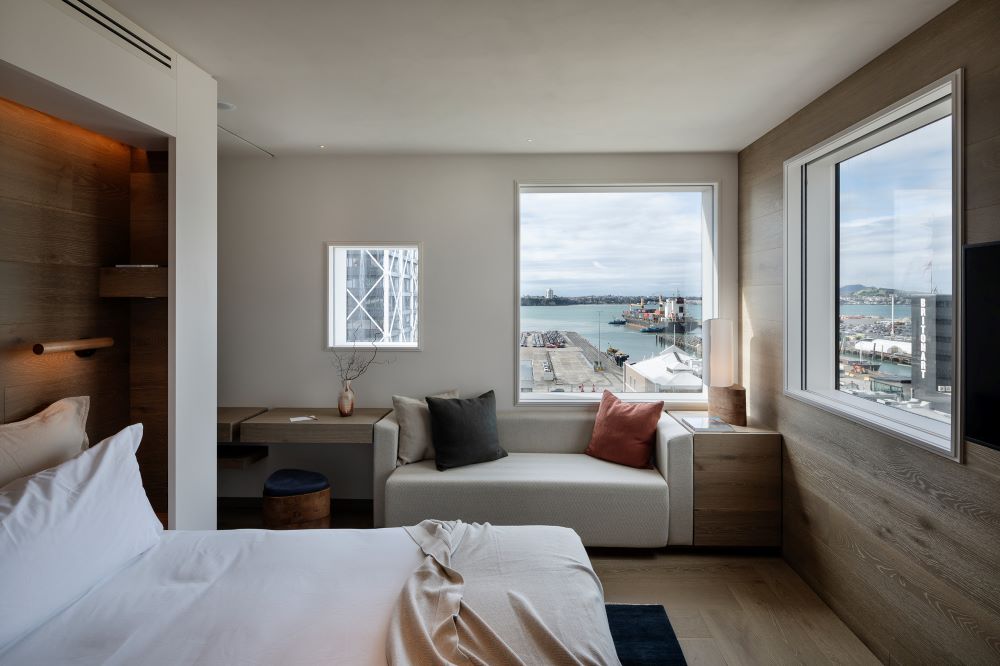 The Tautaki Square Room. Photo: Sam Hartnett.
The Tautaki Square Room. Photo: Sam Hartnett.
Although people-watching is never tiresome from the vantage points of the Hotel Britomart, rooms are fitted with 49-inch smart televisions with casting functions. There is a control panel that adjusts the sun blinds and the black-out blinds with the touch of a button, as well as the bedroom and bathroom lighting and air conditioning.
The mini bar is tucked away in a full-length wardrobe, the inside of which features a wallpaper depicting dancing tūī. Naturally, the mini is stocked with local products, including wine from The Landing, the hotel’s sister property in the Bay of Islands, and chocolate from Britomart neighbour Miann.
Items within the rooms were made bespoke by local artisans, their origins integral to the hotel’s personality. Albany ceramicist Elena Renker and Titirangi ceramicist Rachel Carter created the vases in each room, and dried flower arrangements within them were styled by Antonia De Vere in Mathesons Bay on the Matakana coast. Cushions were weaved by Auckland-based Christopher Duncan using second-hand yarn and local alpaca wool.
Additional to the guest rooms are five large suites on the tenth storey and on the fifth floor of the adjoining Buckland Building. With the suites comes access to a series of rooms known as The Libraries, to host private functions and meetings in.
Wining and dining
Located in the refurbished Masonic House on Customs Street is the Hotel Britomart’s restaurant, Kingi, from the creators of Ponsonby star eatery Orphans Kitchen.
Kingi has the potential to match the five-star rating of the hotel, but it falls a little short. The service was good, but not great. Kingi needs a few extra waitstaff to notice your needs before you do, especially when the menu emphasises sharing plates, which means a lot of plate traffic per table and a lot of attention required.
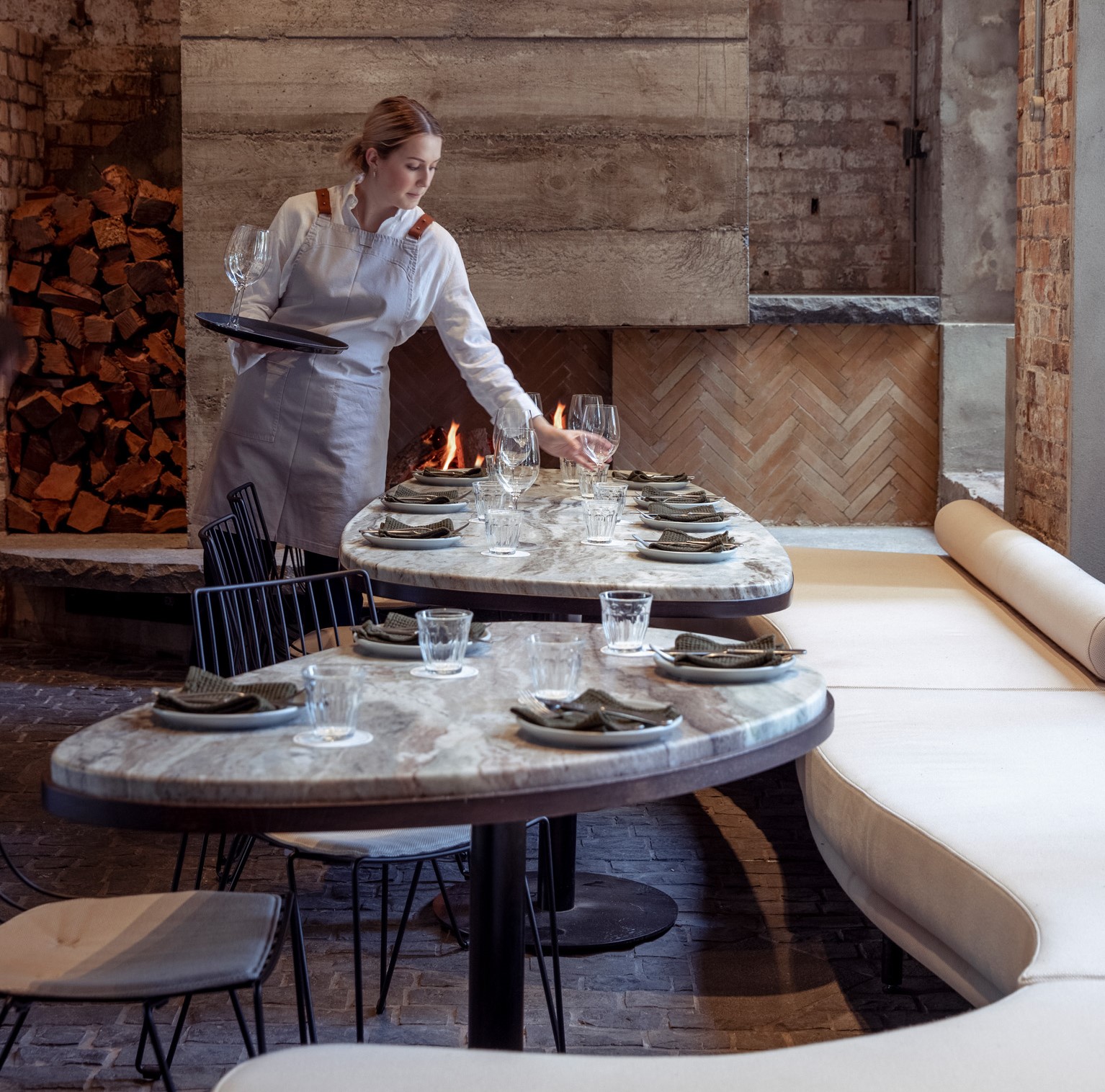 Kingi Restaurant. Photo: Sam Hartnett.
Kingi Restaurant. Photo: Sam Hartnett.
Kingi's food, too, was good but not great, but it could so easily be fantastic with a little refining. For a seafood restaurant (the name, after all, is short for Kingfish), the standout items were disappointingly not seafood. The hot smoked kahawai and the kingfish burger did not impress as expected, but the wood-roasted oyster mushrooms and the piping-hot flatbread are absolute must-haves.
For breakfast, be sure to indulge in Kingi’s smoky take on the southern cheese roll, the size of which would excite the most stolid of Southerners.
The Britomart Hotel is a well-curated, calm oasis which visitors can comfortably immerse themselves in.
thehotelbritomart.com
29 Galway Street, Britomart, Auckland.
Rooms from $315.


